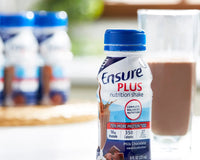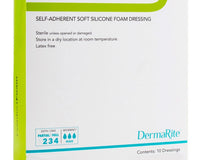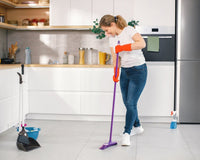Changing adult diapers is a critical task for caregivers, health professionals, and even family members who are responsible for the well-being of others. The process itself may seem daunting initially, but with the right knowledge and tools, it becomes a manageable and even routine part of caregiving.
Understanding how long to change adult diapers is essential for maintaining the comfort and dignity of the patient. On average, the process takes anywhere from 5 to 15 minutes, depending on the caregiver's experience, the patient's condition, and the environment in which the change occurs. Efficiently managing this routine not only helps prevent skin irritations and infections but also enhances the overall quality of life for the individual.
At Cart Health, we're dedicated to providing the necessary support and products to make this task easier for everyone involved. Our comprehensive range of medical supplies ensures you have everything you need at your fingertips.
Order online here for convenient shopping and fast delivery!
Factors Affecting Change Time
Several factors can influence how long to change adult diapers, making each situation unique. Understanding these factors can help caregivers plan better and improve efficiency.
1. Experience of the Caregiver: Experienced caregivers can perform diaper changes more quickly and efficiently compared to those who are new to the task. Familiarity with the process and the specific needs of the patient can significantly reduce the time required.
2. Patient's Condition: The physical and mental condition of the patient plays a crucial role. Patients with limited mobility or severe health conditions may require more time and care during the diaper-changing process. Conversely, those who can assist in small ways can speed up the process.
3. Environment: The setting where the diaper change occurs can also impact the time it takes. Having a well-organized, clean, and private space with all necessary supplies readily available can make the process smoother and quicker.
4. Type of Diaper: The design and type of the adult diaper being used can affect the time required for a change. Some diapers are more straightforward to put on and take off, while others may have more complex fastening systems.
Understanding these factors can help caregivers optimize their routines and improve the comfort and dignity of those in their care. By being mindful of these elements, the process of changing adult diapers can become more efficient and less stressful for both parties.
Step-by-Step Guide to Changing Adult Diapers

Changing an adult diaper can seem daunting at first, but following a structured, step-by-step approach can simplify the task and ensure comfort and hygiene for the patient.
1. Preparation: Gather all necessary supplies before starting. This includes a clean diaper, disposable gloves, wipes, barrier cream, and a disposal bag. Having everything within reach will streamline the process.
2. Positioning: Help the patient lie down on their back, ensuring they are comfortable and secure. If the patient is mobile, they might prefer to stand or sit during the change.
3. Removing the Soiled Diaper: Put on disposable gloves. Remove the soiled diaper carefully by unfastening the tabs or sides. Gently lift the patient’s hips or roll them to the side to slide the diaper out from underneath.
4. Cleaning: Use wipes to clean the genital area thoroughly, wiping from front to back to avoid infection. Ensure all skin folds are cleaned and dried properly.
5. Applying Barrier Cream: If necessary, apply a barrier cream to protect the skin from irritation and moisture. This step is especially important for patients with sensitive skin or those prone to rashes.
6. Putting on the Clean Diaper: Slide the clean diaper under the patient's hips while they are still lying down, or help them step into it if they are standing. Fasten the tabs securely, ensuring the diaper fits snugly but comfortably.
7. Disposal: Dispose of the soiled diaper and gloves in a designated disposal bag. Wash your hands thoroughly after the procedure to maintain hygiene.
By following these steps, caregivers can ensure a smooth and efficient diaper-changing process. This routine not only promotes hygiene but also enhances the comfort and dignity of the patient.
Tips for Efficient Diaper Changes

Efficiency in changing adult diapers is crucial for both the caregiver and the patient. Here are some valuable tips to make the process quicker and more comfortable for everyone involved.
1. Organize Supplies: Keep all necessary items like clean diapers, wipes, gloves, and barrier creams in a designated, easily accessible spot. This minimizes the time spent searching for supplies.
2. Use High-Quality Products: Invest in high-quality adult diapers that offer better absorbency and fit. These not only reduce the frequency of changes but also enhance comfort.
3. Pre-Fold Diapers: Pre-folding the diaper before beginning the change can save precious seconds. This step makes it easier to slide the diaper under the patient quickly.
4. Communicate: Engage with the patient throughout the process. Letting them know each step can ease anxiety and make them feel more involved, which can speed up the process.
5. Practice Proper Hygiene: Always wash your hands before and after each change. Using disposable gloves can also prevent the spread of germs and make the process cleaner.
6. Be Gentle but Efficient: While speed is important, it should not come at the cost of the patient’s comfort. Be gentle when cleaning and changing to prevent skin irritation or injury.
7. Regular Timing: Establishing a regular schedule for diaper changes can make the process more predictable and manageable. This also helps in preventing rashes and infections due to prolonged exposure to moisture.
By incorporating these tips, caregivers can enhance the efficiency of diaper changes, making the experience less stressful and more comfortable for the patient.
Common Challenges and Solutions
Changing adult diapers can come with its own set of challenges, but understanding these issues and their solutions can make the process smoother for both the caregiver and the patient.
Skin Irritation and Rashes: One of the most common challenges is skin irritation or rashes. To combat this, ensure the skin is thoroughly cleaned and dried before putting on a new diaper. Using a barrier cream can help protect the skin from moisture and friction.
Leakage: Leakage can be a significant issue, especially if the diaper is not the right fit or absorbency level. To solve this, choose a high-absorbency diaper and ensure it fits snugly around the waist and legs. Double-check for any gaps or misalignments.
Odor Control: Managing odor can be challenging, especially in confined spaces. Using odor-neutralizing sprays and placing disposable bags for soiled diapers can help maintain a fresher environment. Additionally, frequent changes can minimize odor build-up.
Patient Discomfort: Some patients may feel discomfort or embarrassment during diaper changes. Communicating openly and maintaining a calm demeanor can help alleviate some of this discomfort. Ensuring the process is quick and discreet also helps in maintaining dignity.
Mobility Issues: For patients with limited mobility, repositioning can be difficult. Using a lift or having an extra pair of hands can make the process easier and safer. Ensuring the patient is comfortable and supported throughout the change is crucial.
Time Constraints: Time can be a significant constraint, especially for caregivers managing multiple patients. Organizing supplies beforehand and establishing a routine can reduce the time needed for each change.
By identifying these common challenges and implementing the suggested solutions, caregivers can make the diaper changing process more efficient and comfortable, ultimately improving the quality of care provided.
Conclusion and Best Practices

Mastering the efficient and comfortable changing of adult diapers is essential for both caregivers and patients. By understanding the intricacies of the process and being prepared for common challenges, you can ensure a smoother experience.
Best Practices:
- Preparation: Always have all necessary supplies within reach before you begin the diaper change. This includes clean diapers, wipes, barrier cream, and disposal bags.
- Hygiene: Maintaining hygiene is crucial. Wash your hands thoroughly before and after each change, and use gloves to protect both yourself and the patient.
- Communication: Keep an open line of communication with the patient. Ensure they are comfortable and understand each step of the process. This can greatly reduce any anxiety or discomfort.
- Routine: Establishing a routine can make the process more predictable and efficient. Try to change the diaper at regular intervals to prevent skin issues and maintain comfort.
- Skin Care: Regularly check the skin for any signs of irritation or sores. Use barrier creams to protect sensitive areas and address any issues promptly to prevent complications.
Adhering to these best practices not only makes the process more efficient but also greatly improves the patient’s comfort and dignity.
At Cart Health, we understand the unique challenges you face. Whether you are a caregiver, health professional, or patient, our commitment is to provide the medical supplies, health solutions, and support you need to make life a little easier. Order online here for convenient shopping and fast delivery!








